You are here
As the highest summit in the state, 13,528-foot Kings Peak is affectionately known as the Ceiling of Utah (although prior to satellite measurement in 1966 the highest summit was thought to be South Kings Peak, the summit of which sits at a mere 13,512 feet of elevation). Possessing the 19th-highest topographic prominence in the contiguous U.S. at 6,348 feet, Kings is also one of the 57 "Ultras," or peaks with a prominence exceeding 1,500 meters.
Kings Peak can be accessed from multiple potential routes, including the epic Highline Trail of the Uintas, but unlike many of Colorado's 14ers, all routes require significant travel lengths just to begin the ascent. This adventure covers the most common route via Henrys Fork Trail. The draw of bagging Utah's highest summit is certainly a motivator for this trip, but make no mistake, the alpine meadows and lakes of the several nearby basins are magnificent in their own right.
The one-way distance to Kings Peak from Henrys Fork Trailhead is 16 miles with a net elevation gain of nearly 4,200 feet. It can be accomplished as an incredibly strenuous day trip, but it is best appreciated as a backpacking excursion. This route is easily broken down into the following sections, with much of the first half walking along the Henrys Fork River:
- Henrys Fork Trailhead to Alligator Lake spur
- Alligator Lake spur to Elkhorn Crossing
- Elkhorn Crossing to Dollar Lake
- Dollar Lake to Gunsight Pass
- Gunsight Pass to Anderson Pass
- Anderson Pass to Kings Peak Summit
Around 2.3 miles from the trailhead and after minimal elevation gain, a spur trail to the west will present itself. This trail goes to Alligator Lake and is roughly 0.5 miles one way. The trail will climb moderately over the next 3.2 miles to a major junction known as Elkhorn Crossing (5.5 miles from the trailhead). From here, a loop trail heads west that will circumnavigate several alpine lakes and add at least 4 miles of hiking, but it can provide some less crowded camping opportunities. The more direct route continues straight through Elkhorn Crossing. Dollar Lake is located approximately 2 miles after Elkhorn Crossing off to the east side of the trail. It is not very visible from the trail, but it is typically easy to locate for no other reason than the noticeable human presence. This is very nearly the halfway point to Kings Peak, and it is a common camp site. Please observe all USFS regulations for campfires and campsite locations in this area. Due to increased traffic, the area is being monitored by the USFS in an effort to try and best preserve it for everyone's enjoyment. Less crowded camping can be had farther to the south near Gunsight Pass, but water access is less convenient.
Dollar Lake to the summit of Kings Peak is a burly day trip in itself, with 8 miles of one-way travel and ascent in excess of 2,700 feet. The route will wrap east and south of Kings Peak before the final north ridge ascent. It is advisable to get an early start, especially in summer to avoid potential conflicts with afternoon thunderstorms.
The first obstacle en route to Kings Pass is Gunsight Pass, nearly 4 miles from Dollar Lake with more than 1,000 feet of elevation gain. Much of this section is relatively flat as it traverses the picturesque upper Henrys Fork Basin with the shark tooth of Kings Peak rising in the distance. The steep climb to Gunsight will terminate with an unmistakable rock cairn and an expansive view into the Painter Basin to the south. An optional route heads west up the scree, but most continue down into Painter Basin. After descending roughly 400 feet into Painter Basin, skirt the basin by heading west along the base of the cliffs to join the Highline Trail and begin the arduous ascent to Anderson Pass. The section from Gunsight Pass is roughly 3.5 miles in length and 1,000 feet of net elevation gain (total gain is greater due to a descent into Painter Basin).
The views from Anderson Pass and the nearby ridges are absolutely stunning, and you'll see massive peaks and endless alpine basins in every direction. Kings Peak summit is almost directly south of Anderson Pass, and it can be reached after a half-mile Class 1 climb of roughly 800 feet. For ambitious peak baggers, the Kings-Eammon Ridge Run (an extended alpine route to reach seven 13ers) can possibly be incorporated as part of a MUCH bigger adventure.
The return to Henrys Fork Basin should follow the same route. In the case of emergency or inclement weather, an alternate descent route is available, but extreme caution should be exercised. Just to the northeast of Anderson Pass a small saddle can be seen at the western edge of West Gunsight Peak. This route is known as "The Chute," and it descends nearly 1,300 feet down incredibly steep talus slopes of loose rock and dirt. The time you save with this route when compared with Painter Basin may not be worth risk involved. After achieving the bottom of The Chute, unmarked, overland travel is required to meet up with the main trail to the northeast.
Logistics + Planning
Current Weather: Powered by Dark Sky






























Comments
Sign In and share them.